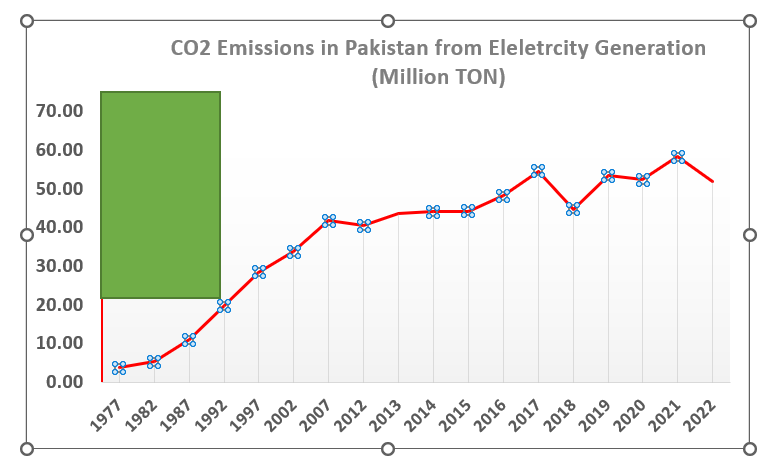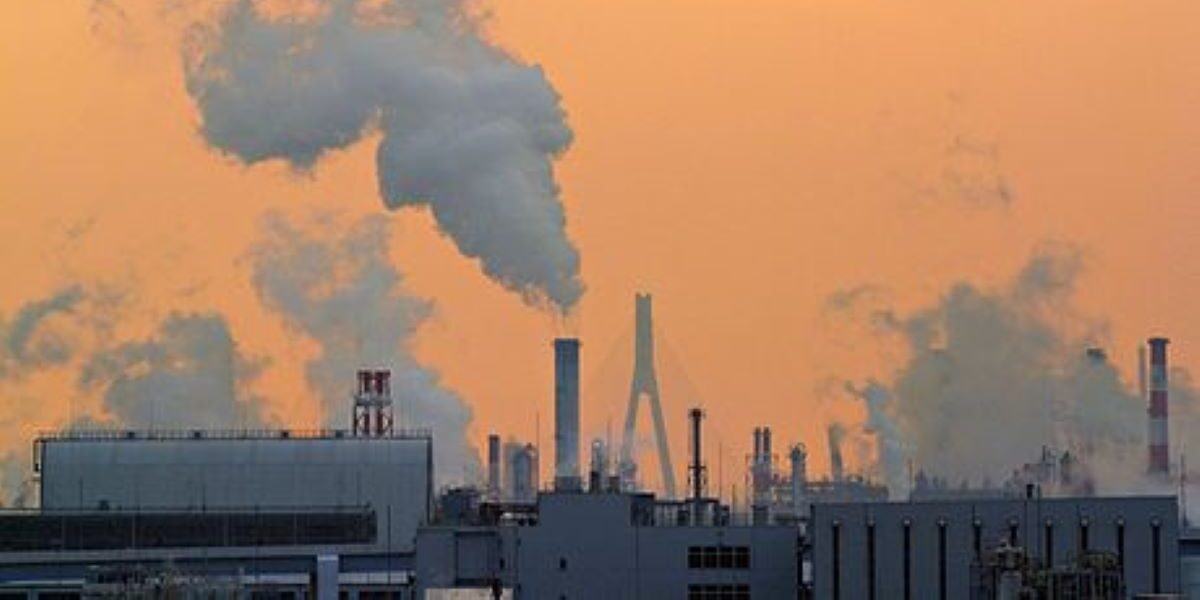 By Engineer Arshad H Abbasi
By Engineer Arshad H Abbasi
Pakistan, despite possessing the sixth-largest nuclear arsenal, has been rendered economically vulnerable due to its failing power sector. The Prime Minister of Pakistan, during the World Economic Forum in April 2024, highlighted the economic devastation caused by the energy sector and climate change. There is a significant lack of understanding within the government regarding the linkage between electricity generation and climate change. This has led to a drastic reduction in hydroelectricity production and increased reliance on thermal and coal-fired power plants, resulting in higher electricity costs and rapid depletion of natural gas reserves
Pakistan’s power sector woes have now created an existential crisis for the country contributing to premature deindustrialization and severe energy poverty for the people. The staggering circular debt, on the other hand, is another headache that the government faces – literally a noose around its neck.
A 2022 report [1] asserts that “IPPs have committed fraud to the tune of Rs 4.0 trillion over the last twenty years (Rs 200 billion each year) mainly through invoicing errors, misinterpretation of power purchase agreements, and blatant over-invoicing of plant costs.”
Critics call it a heist that is now bleeding Pakistan’s economy.
This CRSS report – authored by Engineer Arshad Abbasi – highlights yet another extremely damaging dimension of IPPs heist; namely, the intimate and unaccounted costs of IPPs emissions on climate change as well as lost opportunity to lower generation costs, both for the industrial and residential consumers.
The report underlines that Pakistani government negligently never promoted retrofitting of thermal plants to use UNFCCC facilities to increase efficiency and reduce fuel consumption per unit of older and inefficient power plants. This report presents example of lackluster GoP commitment to support retrofitting application by two IPPs to UNFCCC in March 2013.
It is preposterous on the part of the government not to have made retrofitting of IPPs thermal plants mandatory on power producers. By failing to honor reduction in GHG emissions, the GoP will be responsible for inequity contribution to climate change related social and economic damages that will be borne by the people of Pakistan.
An industry-wide adoption of retrofitting would have resulted in reducing the electricity tariffs as well as lowering of greenhouse gas emissions. Lamentably, the country also lost the opportunity to obtaining USD-based carbon credits in a situation of severe foreign reserves scarcity.
Key Findings of the Report
- Pakistan is estimated to possess the sixth-largest nuclear arsenal in the world, with roughly 160 warheads. However, the leaking power sector bucket has turned Pakistan into a global begging bowl.
- During the World Economic Forum in April 2024, the Prime Minister of Pakistan highlighted the detrimental impact of the Energy Sector and climate change, emphasizing that it has led to an economic catastrophe.
- The prime minister may lack awareness of the strong connection between electricity generation and climate change. Pakistan has faced negative consequences due to this lack of understanding. The shift in energy mix towards thermal plants led to a significant decrease in hydroelectricity production from 70% to 29% in the last three decades. Consequently, Pakistan now has the highest electricity costs in South Asia. Additionally, the rapid depletion of natural gas reserves occurred as gas was used in power plants for electricity generation.
- Yet, the worst impact of these gas and oil-fired thermal plants, coupled with a new fleet of coal-fired power plants, especially coal power plants under the CPEC initiative increased the greenhouse gases GHG emissions at an unprecedented rate.
- Pakistan’s carbon emissions from electricity generation were minimal, at 5 million tons of CO2, with negligible amounts of methane (CH4) and nitrous oxide (N2O) in 1990 now increased to 52 million tons of CO2, 4.4 million tons of CH4, and 0.04 million tons of N2O by electricity generation by fossils fuels alone the year 2023.
- The Pakistani government has never promoted retrofitting of thermal plants to use UNFCCC facilities to increase efficiency and reduce fuel consumption per unit of electricity produced, thereby lowering the cost of electricity for 250 million Pakistanis and resulting in low greenhouse gas emissions as well. Giving the carbon credit in dollars to a country devoid of foreign reserves was the biggest opportunity lost, though.
- The owner of two thermal power plants applied for retrofitting to UNFCCC on March 21, 2013, but neither the owner nor the government showed the seriousness to materialize this opportunity. The Government preferred to buy expensive dirty electricity from these two power plants to plunge into economic disaster
- Pakistan signed numerous international conventions, including the Paris Agreement, pledging to cut greenhouse gas (GHG) emissions by 50% by 2030. However, the government is determined to discourage roof-top solar systems, which is a flagrant violation of the UN Convention on Climate Change, rather than concentrating on this goal right now.
- Pakistan can never come out of the energy crisis, without abolishing NEPRA, replacing regulatory affairs on Artificial Intelligence, and getting rid of inept officials, without a transparent government and help of the international organizations
Main Report
In April, the Prime Minister of Pakistan addressed the World Economic Forum’s closing session in Riyadh. Saudi Arabia candidly acknowledged that Pakistan’s circular debt crisis had escalated into a dire threat to the country’s sovereignty. The Premier emphasized that despite Pakistan’s relatively low carbon footprint, the government still grapples with the severe consequences of climate change. Scientific research confirms that the primary driver of global climate change is the burning of fossil fuels like coal, oil, and gas, responsible for over 75% of global greenhouse gas emissions and nearly 90% of carbon dioxide emissions. Moreover, fossil fuel-based electricity generation accounts for over 40% of global carbon emissions.
In Pakistan, hydroelectricity generation peaked at 70% from 1978 to 1988, a period of remarkable economic prosperity. The journey of clean energy and economic progress was halted when the construction of the 3600 MW Kalabagh Dam was delayed due to political controversies, despite being scheduled for completion in 1993 to generate 11,400 million units of electricity annually. In response, the government introduced the 1994 Power Policy, prioritizing oil, diesel, and gas-fired thermal power plants. Generous incentives were offered to Independent Power Producers (IPPs) without ensuring the thermal power plant’s technical security and efficiency standards. This negligence led to the adoption of inefficient thermal power plant technology. Notably, the power policies from 1994 onwards failed to prioritize thermal plant efficiency, a crucial criterion. The 2015 power policy was tailored to accommodate CPEC power projects, resulting in a total fleet of 74 thermal power plants in the country. Consequently, the share of green hydroelectricity plummeted to 29% by 2023, while electricity costs surged drastically.
Between 1978 and 1994, Pakistan’s GDP growth rate remained at a robust 9% annually, thanks to affordable and green hydroelectricity electricity costing an average of 0.70 rupees per unit. During this period, hydroelectricity accounted for approximately 70% of the energy mix. During this period, according to EDGAR’s independent emission estimates, under the UNFCCC and using IPCC methodology, Pakistan’s carbon emissions from electricity generation were minimal, at 5.5 million tons of CO2, with negligible amounts of methane (CH4) and nitrous oxide (N2O). However, with the introduction of thermal power plants, CO2 emissions steadily increased. Below is a graph showing a phenomenal increase in CO2 emissions since the introduction of thermal power plants.

The addition of large coal-based power projects under CPEC further accelerated this trend, resulting in current emissions of 52 million tons of CO2, 4.4 million tons of CH4, and 0.04 million tons of N2O from the power sector in the year 2023 as shown below in table

The efficiency of thermal plants, which determines how much oil, gas, or coal is used to generate one unit of electricity, is another significant issue that contributes more greenhouse gases to the atmosphere in addition to the addition of thermal power plants. The main benefit of an efficient plant is that it will release fewer greenhouse gases (GHGs) into the atmosphere, such as carbon dioxide, methane, and nitrous oxide. The power industry has been dealing with the persistent threat of circular debt as a result of the unrestricted nature of thermal power plants. Due to this, electricity has become very expensive in the area and several problems have arisen, including capacity payments and underuse of thermal power plants that were installed especially as part of CPEC Energy projects.
Besides the installation of thermal power plants, another significant factor contributing to the increase in greenhouse gas emissions is the efficiency of these plants. The efficiency of a thermal plant determines the amount of oil, gas, or coal required to produce a single unit of electricity. A highly efficient plant has the advantage of emitting minimal greenhouse gases, such as carbon dioxide, methane, and nitrous oxide, into the atmosphere. NEPRA, the power regulator, has failed to establish or define the minimum efficiency standard for thermal power plants. As a result of this Himalayan blunder by NEPRA, the power sector is currently grappling with challenges such as circular debt and the highest electricity prices in the region. This situation has also led to various issues, ranging from capacity payments to the underutilization of thermal power plants installed as part of the CPEC Energy project
The UNFCCC provides Carbon credits to power plants that aim to enhance efficiency through retrofitting. Power plants with higher efficiency levels consume less coal, gas, or oil to produce electricity, consequently reducing the cost of electricity. Another significant benefit of a proficient thermal system is its ability to release lower amounts of greenhouse gases (GHGs) like carbon dioxide, methane, and nitrous oxide for each unit of electricity produced. India retrofitted numerous coal and gas-fired power plants, leading to increased funding from the UN and decreased electricity expenses for consumers. This ultimately contributed to India’s rise as the fourth-largest economy globally.
Numerous non-governmental organizations (NGOs) in Pakistan are actively engaged in combating climate change. Regrettably, it seems that their focus lies solely on producing visually captivating and attention-grabbing reports. Despite receiving substantial financial support from UNFCCC, these NGOs have failed to deliver tangible outcomes due to a severe dearth of experience, dedication, and government supervision. It is truly disheartening to witness how these NGOs squandered funds on extravagant ceremonies held in luxurious five-star hotels, without ever taking the initiative to investigate the reasons behind Pakistan’s alarming surge in greenhouse gas emissions from thermal power plants over the past three decades. This lack of monitoring to ensure the efficient utilization of funding has contributed to this unfortunate situation.
Consequently, the funding options provided by UNFCCC have been rendered ineffective. Only on March 21, 2013, the owner of two power plants in Pakistan submitted project proposals to UNFCCC aimed at reducing 440,135 tons of CO2 emissions by retrofitting the oil-fired 362 MW Lalpir and 365 MW AES Pak Gen Plants in Muzaffargarh. The project’s task was to replace the current steam turbine rotor assembly for High and Intermediate Pressure (HIP) and Low Pressure (LP) turbines with a high-performance and high-reliability steam turbine rotor assembly. To improve efficiency and dependability, new blade paths would be installed in place of the current ones in High and Intermediate Pressure (HIP) and Low Pressure (LP) turbines. However, even after 11 years, the responsible IPP has shown no interest in pursuing the retrofitting project, which could have potentially lowered electricity prices and reduction of greenhouse gases from these power plants. This lack of action can be attributed to the inaction of the government, the Ministry of Climate Change, and NEPRA.

These two power plants technically completed their useful life, which is international, and even in India after 25 years, thermal plants are retired as government policy.

In the financial year 2021-22 alone, the only fuel average cost component of AES PAK was 37.83 Rupees units, while the AES average cost component of Leloir was Rs 38.46 per unit of electricity according to NEPRA own analysis. The efficiency of both power plants remained at 36.8% and 36.42% respectively. In the merit order only the cost of Energy Purchase Price (EPP) is mentioned not the cost of the Capacity. Purchase Price (CPP) is included. While NEPRA in its notification-wide letter no EPRA/ADG (Tarif/ NRG-14 dated, 10, 2023 allowed DISCOs to buy electricity at the rate of Rs.19.32/kWh (per Unit)
Let’s take another look at the data disseminated by NEPRA and CPPA both in the year FY 2022 -23. The comparison shows how cheap hydroelectricity is when compared to the cost of electricity generated by two thermal power plants running at an efficiency of around 35%.

If the two power plants had fulfilled their commitment to the UNFCCC and improved their efficiency, the cost of electricity would have been considerably lower. The high cost of electricity has caused immense suffering for the 250 million people of Pakistan, to the extent that many individuals have resorted to suicide due to the price hike. It is disheartening to witness how NEPRA and the Ministries of Pakistan have deceived the UN in such a blatant manner. These two power plants alone have released approximately 222 million tons of CO2 into the atmosphere during FY 2022-23.
The above table also highlights the significant policy influence of these IPPs, who sell electricity at an exorbitant price, while the government hesitates to purchase much cheaper green electricity from rooftop solar systems. Globally, solar power is gaining a larger share in the energy mix to combat the impact of climate change. However, the government of Pakistan contradicts its narrative by discouraging the generation of clean electricity through rooftop solar systems.
Following the 2022 floods, the government is hammering globally the point that Pakistan is among the world’s most climate-vulnerable nations. The government is always requesting funding to combat the effects of climate change. Still, it never takes into account the feasible and workable steps that could be taken to reduce greenhouse gas emissions from the production of electricity by establishing a standard for thermal plants’ minimum efficiency.
Regrettably, the lack of attention from the government, NEPRA, and NGOs has led to an economic crisis due to the failure to tackle greenhouse gas emissions produced by inefficient thermal power plants. The reduction of these emissions is crucial not only for global climate stability but also for lowering electricity costs for 250 million Pakistanis.
Pakistan became a signatory to the Paris Agreement, an international accord aimed at addressing climate change. The agreement was ratified in 2016, committing the country to a 50% reduction in greenhouse gas (GHG) emissions by 2030. However, the government has failed to honor this commitment, neglecting to take any significant action to tackle this pressing issue. Despite this, credit must be given to the electricity consumers who, although unaware of the impact of climate change, have shown dedication by adopting rooftop solar systems. Unfortunately, it is disheartening to see that the Ministry of Power is committed to discourage net-metering policies. The continuation of the current net metering policy is crucial for Pakistani electricity consumers to receive affordable electricity from rooftop solar systems. To achieve the UN and IMF’s emission reduction goals by 2030, they must support the net-metering policy and exert pressure on the government to retire inefficient thermal power plants. This remains the only viable solution for a country ranked 6th in terms of nuclear arsenal.
The By Engineer Arshad H Abbasi Member BOG CRSS (WhatsApp 0333-5144405). author can be also contacted at ahabasi@gmail.com
[1] “Power Sector: An Enigma With No Easy Solution “by Pakistan Institute of Development Economics

